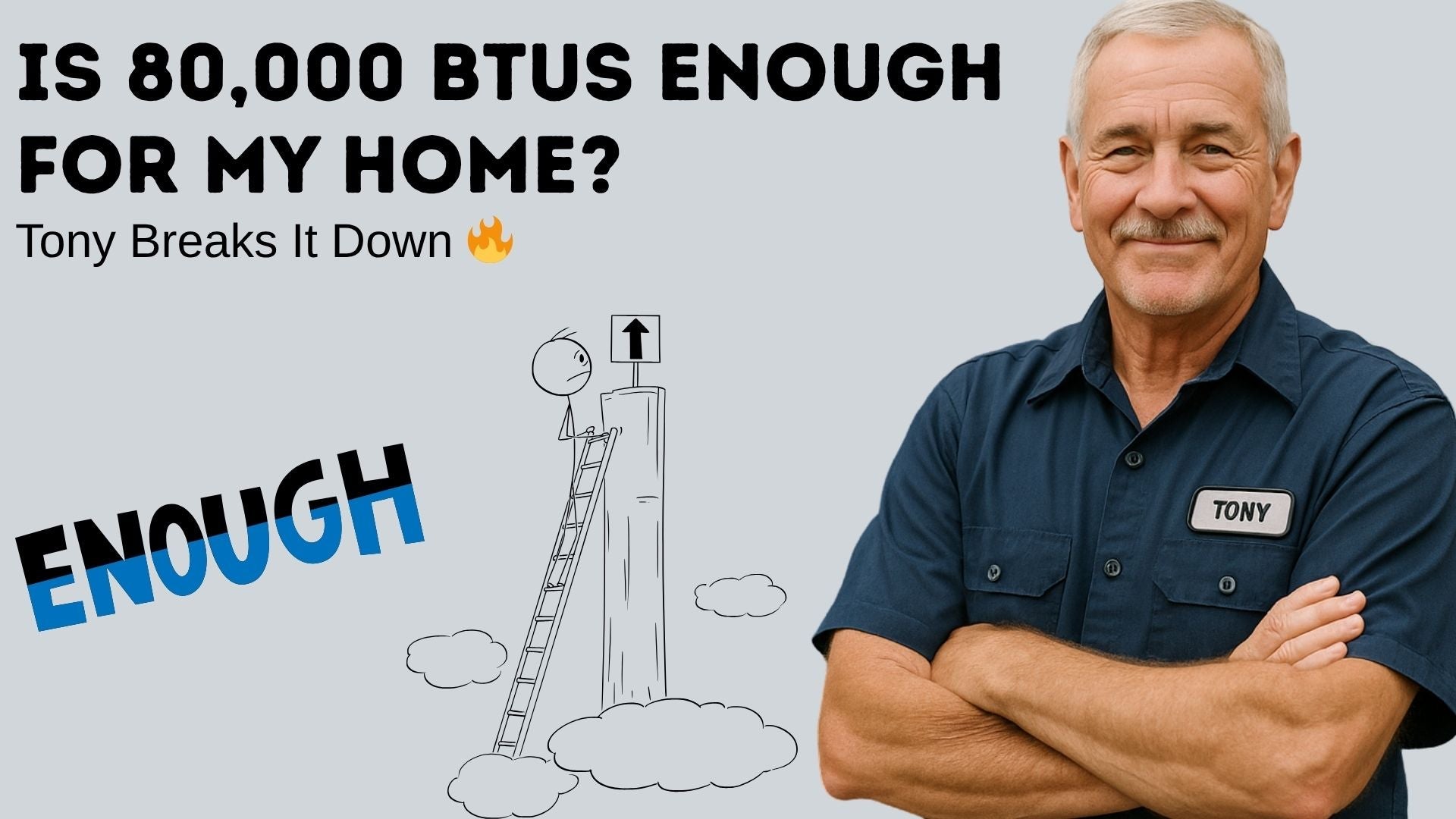Let’s Talk Furnace Size: Why 80,000 BTUs Might Be Perfect 👷♂️
Alright folks, here’s the deal. I’ve seen too many people either overdo or skimp on furnace size, thinking “bigger is better” or “I’ll save money with something smaller.” In reality, it all comes down to proper BTU (British Thermal Unit) sizing for your home’s needs.
The Goodman 96% AFUE 80,000 BTU Gas Furnace (GR9S960803BN) is a great unit—efficient, compact, and reliable. But is it the right size for you? Let’s break it down.
What Does 80,000 BTUs Actually Mean?
A BTU is the amount of heat required to raise the temperature of one pound of water by one degree Fahrenheit. So when we say a furnace is rated for 80,000 BTUs, it’s capable of delivering that much heat output per hour.
But here's the catch:
➡️ That’s input BTU, not necessarily what your home feels. You need to factor in the AFUE rating to find out what actually gets delivered.
The Goodman GR9S960803BN has a 96% AFUE, so:
80,000 x 0.96 = 76,800 BTUs of actual heat to your home.
Sizing Your Furnace the Right Way 🔍
A good rule of thumb for average insulation and climate is:
-
30–60 BTUs per square foot depending on your region.
So let’s do some fast math:
| Home Size (sq ft) | BTUs Needed (Est.) |
|---|---|
| 1,200 sq ft | 36,000–48,000 |
| 1,800 sq ft | 54,000–72,000 |
| 2,000 sq ft | 60,000–80,000 |
| 2,400 sq ft | 72,000–96,000 |
If you live in a cold climate (Zone 5 or 6), the higher range applies. If you’re down south, you can go lower.
👉 For most homes between 1,800 to 2,400 sq ft, this 80,000 BTU Goodman furnace is right in the sweet spot.
🔗 Check out this detailed Heating BTU Calculator to run your numbers more accurately.
Other Factors That Matter
💡 Insulation: If your home’s got older walls, bad attic insulation, or drafty windows, you’ll need more BTUs.
🏠 Ceiling height: High ceilings = more volume = more heat needed.
🌬️ Ductwork layout: Poor ducting can rob your system of efficiency, no matter how perfect the BTU match.
Why I Like the GR9S960803BN for Mid-Sized Homes
✅ Single-stage simplicity: Fewer moving parts = fewer breakdowns.
✅ 9-speed blower: More comfortable airflow than your old-school “on or off” systems.
✅ Slim 17.5” cabinet: Great fit for tight utility spaces or older retrofit jobs.
✅ 96% efficiency: You’re keeping more heat and losing less out the flue.
🛠️ I’ve installed this unit in dozens of homes. If you're between 1,800–2,200 sq ft, it's usually a rock-solid match.
How Oversizing Hurts Your Wallet (and Your Comfort)
I’ve walked into plenty of basements where someone thought a 100,000+ BTU furnace would be better “just in case.” Nope.
🚫 Short cycling – An oversized unit turns on and off too often.
🚫 More wear and tear – Short cycling burns components faster.
🚫 Uneven heating – Rooms get hot fast, then cool quickly.
🚫 Wasted energy – You’re paying for heat you don’t need.
Resources Worth Checking Out
🔧 Final Thoughts from Tony
If you're looking at a mid-sized home in a colder area and wondering, “Is 80,000 BTUs enough?”—the answer is probably yes, as long as your insulation and layout check out.
The Goodman GR9S960803BN isn’t just powerful—it’s efficient, compact, and built for long-term performance. And in my experience? It punches above its weight class.
If you're still not sure, hit up a tech in your area for a Manual J calculation—or drop me a line. I’m always happy to steer folks in the right direction. 👍
In the next topic you will read about: Upflow vs Horizontal Furnace Installations: What’s Best for Your Home? Tony Explains







